Contents
- Crop Cultivation
- Agricultural Communities
- Inspiring Stories from the Fields
- Pioneers of Change in Agriculture
- Voices of the Future
- Festivals and Rituals Related to Agriculture
- Dhawara
- Types of Farming
- Sweet Lemon Farming
- Custard Apple Farming
- Soybean Farming
- Sericulture
- Use of Technology
- Institutional Infrastructure
- Sugar Cooperatives and Local Politics
- Farmer Producer Organizations (FPO)
- Seed Capital of India
- Market Structure: APMCs
- List of APMC markets(as of September 2024)
- Farmers Issues
- Impact of Changing Climate Conditions
- Awareness of Government Schemes
- Graphs
- Irrigation
- A. No. of Projects
- B. No. of Ponds/Vilage Lakes and Storage Dams
- C. Irrigation Beneficiary Area vs Irrigated Area
- D. Share of Beneficiary Area Irrigated
- E. Tubewells and Pumps Installed In The Year
- F. Irrigation and Water Pumping Facilities
- Cropping Metrics
- A. Share in Total Holdings
- B. Cultivated Area (With Components)
- C. Gross Cropped Area (Irrigated + Unirrigated)
- D. Share of Cropped Area Irrigated
- E. Distribution of Chemical Fertilizers
- Land Use and Credit
- A. Area of Agricultural Land Holdings (With Size Group)
- B. Size Groups' Share in Total Agricultural Land Holdings Area
- C. No. of Agricultural Land Holdings (With Size Group)
- D. Size Groups' Share in Total No. of Agricultural Land Holdings
- E. Agricultural Lending
- F. Agricultural Credit as a share of Total Credit
- Sources
JALNA
Agriculture
Last updated on 6 November 2025. Help us improve the information on this page by clicking on suggest edits or writing to us.
Jalna, known as the seed hub of Maharashtra, is mainly an agricultural district situated in a drought-prone region. The district’s landscape is predominantly rural, with farming forming the backbone of its economy.
Much of the cultivated area is rainfed, making farming outcomes closely tied to the region’s variable rainfall. Farmers grow a mix of food grains, pulses, oilseeds, and horticultural crops across different seasons, adjusting cropping patterns to local conditions. Jalna is also an important centre for seed production and cash crops such as cotton and mosambi.
Crop Cultivation
The economy of Jalna is predominantly agrarian, with a diverse range of crops cultivated throughout the year. During the kharif season, farmers grow jowar (sorghum), bajra (pearl millet), maize (corn), cotton, moong (green gram), tur (pigeon pea), urad (black gram), and soybean. In the rabi season, the focus shifts to jowar (sorghum), wheat, sugarcane, groundnut (peanut), and sunflower. Jalna is particularly renowned for its high-quality mosambi (sweet lemon) and chili production. Seasonal crops such as cotton, harbhara (chickpea), moong (green gram), and soybean dominate the agricultural landscape, while mosambi (sweet lemon) and custard apple are the standout fruit crops in the region. Cotton is said to be a significant cash crop in this district. In addition to this, the Dagdi Jowar variety of Sorghum has also received the GI tag from the Government of India.
With improvements in irrigation, farmers can now practice multiple cropping throughout the year. The Agriculture Research Station in Badnapur plays a crucial role in supporting these efforts, providing essential research and guidance.
Recently, a notable trend in Jalna has been the shift towards silk farming. This movement has been spurred by government incentives, offering fixed incomes and a ready market for silk. Currently, it is said that around 1,000 farmers have registered for silk cultivation, covering approximately 1,088 acres. Furthermore, in the upcoming 2023-24 period, an additional 2,000 farmers are expected to join this initiative. The establishment of the first silk market in Maharashtra in Jalna marks a significant step toward the district’s goal of becoming the "silk capital" of the state, with plans to increase the cultivation area in the next five years.

Agricultural Communities
The labour force for agricultural activities in Jalna primarily consists of local workers from nearby villages. During peak seasons like harvesting and sowing, larger landowners often hire migrant labourers to meet the heightened demand.
Despite Jalna's agricultural bounty, farmers face significant hurdles that challenge their resilience. Price volatility is a major concern, as fluctuating market rates complicate financial planning. Rising production costs further squeeze profit margins, putting pressure on the livelihoods of those who cultivate the land. Adding to these challenges, water scarcity looms as a critical obstacle, particularly from February to June, when irrigation becomes increasingly difficult.
Yet, amid these challenges, stories of innovation and determination shine brightly, showcasing the spirit of Jalna’s farming community.
Inspiring Stories from the Fields
Sita Ram Mohite is a remarkable example of this resilience. With no formal education herself and a husband who studied only until the 8th grade, Sita’s journey began in Ghodegaon before her family moved to Sindhi Kalegaon as farm labourers in the mid-'90s. After starting a nursery on another farmer's land and running it for nine years, they purchased their plot and launched a nursery in 2007.
In 2003, with just 200 rupees, Sita ventured into Amla food processing, creating products like candy and jam, which she began marketing at agricultural exhibitions. Today, her business has expanded to offer 14 types of Amla products to major cities. Beyond her success, she actively supports women’s self-help groups in establishing their enterprises. The inspiration for her Amla business came from its renowned Ayurvedic benefits.
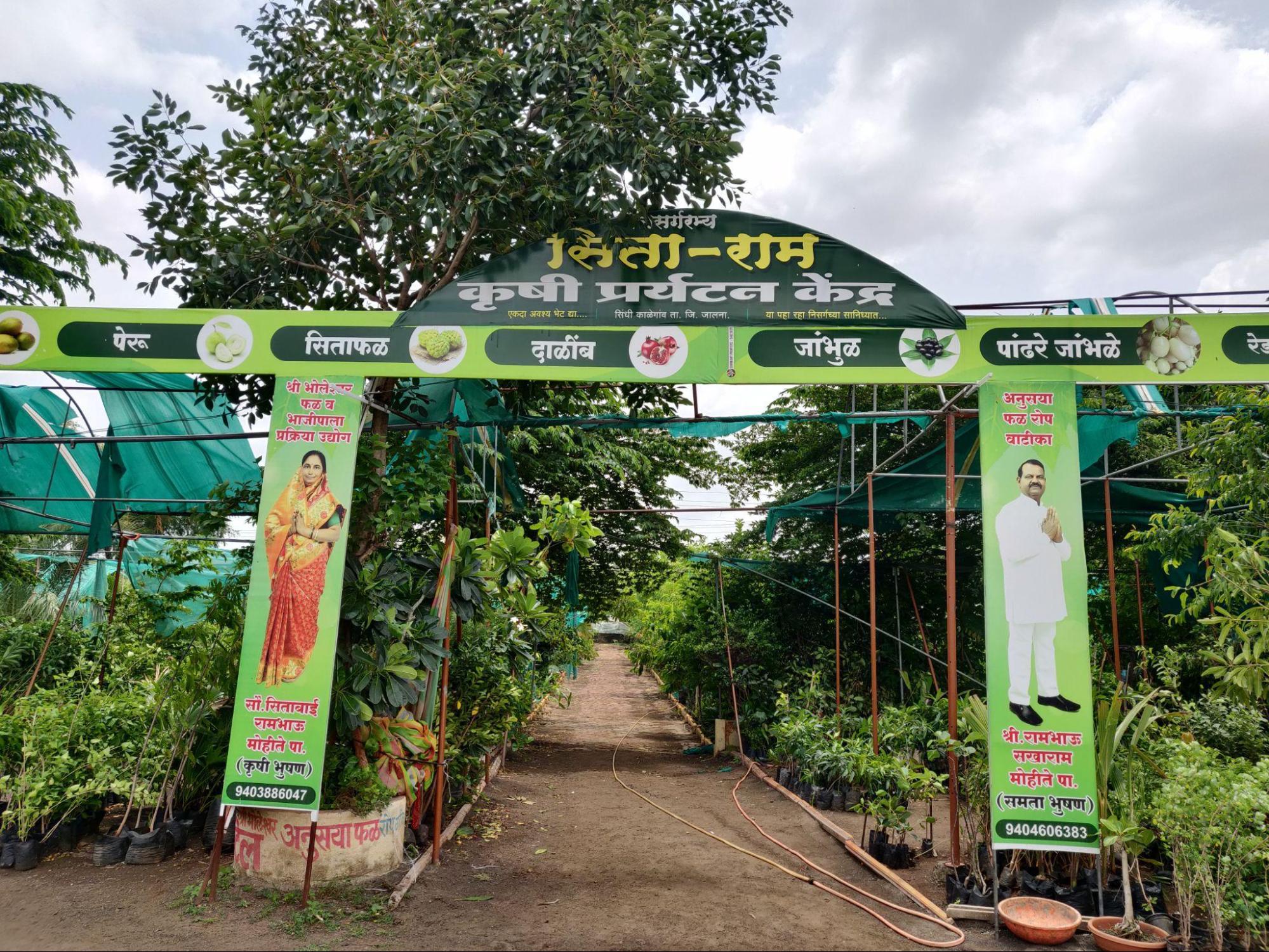
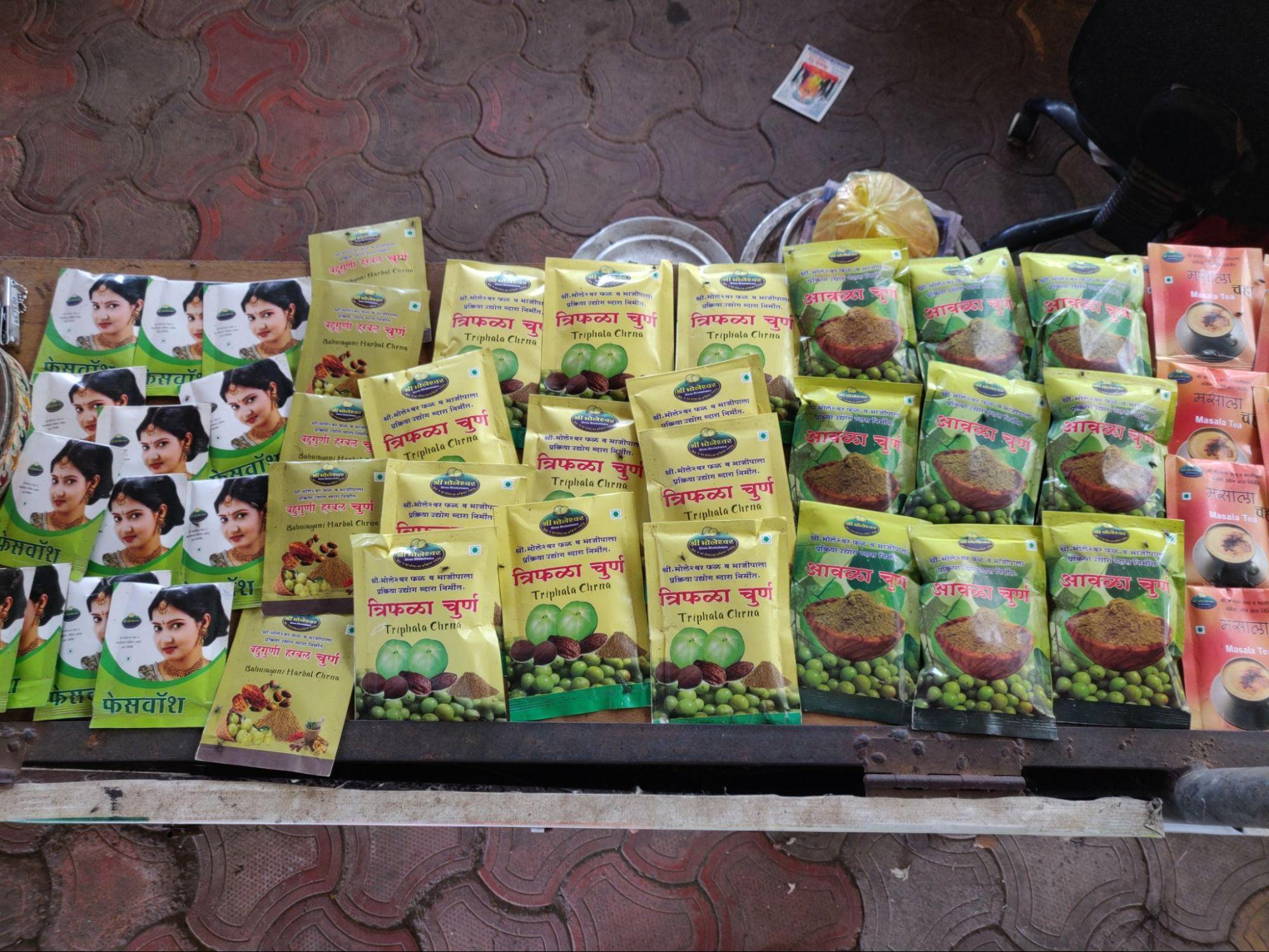
Sita’s impressive achievements include running three thriving businesses: Amla food processing, a hotel, and a nursery specialising in new plant varieties. Her contributions have earned her 135 awards, including the prestigious Krushi Bhushan from the Maharashtra government. Sita's story even made its way into the G20 summit booklet, celebrating the journey of courageous and enterprising women.
Pioneers of Change in Agriculture
Another influential figure in the agricultural landscape is Dr. Badrinath Barwale. Hailing from Hingoli district, Dr. Barwale has revolutionised the seed industry in Maharashtra. A recipient of the Padma Bhushan and the World Food Prize, his journey began with a passion for agriculture that was sparked during his college years, which led to his involvement in the Hyderabad Mukti Sangram movement and subsequent imprisonment. After India's independence, he dedicated himself to agriculture, innovating with new seed varieties, including the hybrid okra seed known as Pusa Savani.

In 1964, Dr. Barwale founded the Maharashtra Hybrid Seeds Company Private Limited (Mahyco), focusing on affordable, high-efficiency seeds for local farmers. Today, Mahyco exports quality seeds to around 20 countries, while the Barwale Foundation supports various social initiatives, including education and healthcare.
Voices of the Future
Dipak Bunage is another vital voice in Jalna’s agricultural community, captivating over 375,000 subscribers on his YouTube channel. His authentic content brings the realities of Maharashtra's agriculture to life, showcasing farmers' experiments from planting to market access and profitability. With his series "One Lakh Profitability per Year from One Acre," Dipak inspires farmers to explore new crops and strategies for prosperity.
Festivals and Rituals Related to Agriculture
Dhawara
According to Shahu Patole (2024), Dhawara is a cherished tradition in the local farming culture of the Marathwada region, where Jalna lies. It typically marks the celebration of a successful harvest with a sacred meal. The preparations for Dhawara begin on the new moon of Diwali, a day dedicated to worshipping the Pandavas, the five legendary brothers from the Mahabharata. In the fields, five small stones are selected and painted with Chuna (limewash), symbolising the Pandavas.
As part of the ritual, wheat flour dough is shaped into various forms, such as plain balls, fruits, and lamps, before being steamed. These, along with dried dates, dry coconut, Ambil (a tangy buttermilk preparation infused with chillies and coriander), Kadhi (a tempered chickpea-buttermilk curry), and Wadya (steamed gram flour cakes), are offered as Naivedya (a devotional offering). A Morva (medium-sized earthen pot) and Shendur (a sacred red powder) are also placed near the symbolic Pandavas.
In keeping with tradition, five stacks of Jowar Pachundas (bundles of harvested sorghum) are arranged upright before the stones. A lamp is then placed inside the Morva and lit as a mark of reverence. At dusk, the Morva is carefully buried near the painted stones, symbolising the completion of the Dhawara ritual and expressing gratitude for the harvest.
Types of Farming
The soils in the Jalna District are primarily black, exhibiting a variety of textures and depths. These soils can be classified as light, medium, or heavy. Areas near the riverbanks, especially in Ambad and Partur blocks, are enriched with deep, fertile black soils, while the northern regions, including Jalna, Bhokardan, and Jaffrabad, consist of coarser soil types.
Sweet Lemon Farming
Sweet lemon farming has emerged as a vital component of Jalna's agricultural framework and is recognised as the district's designated product under the "One District, One Product" initiative. Orchards can be commonly found along the highways in Ambad Taluka, where farmers report considerable income from this crop. The district dedicates approximately 525 hectares to Mosambi cultivation, although many fruits are lost during peak seasons due to logistical issues and insufficient cold storage.
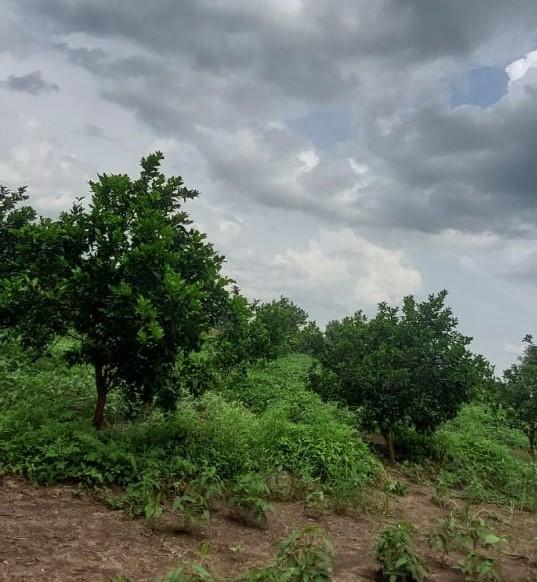
Farmers typically wait 3 to 5 years after planting saplings for the first harvest. Once established, sweet lemon trees can produce fruit for an impressive 15 to 20 years, yielding two harvests each year, from March to May and again from October to November. While sweet lemons require more water than custard apples, they need less than sugarcane, making them a viable choice for farmers with limited water availability.
The ideal conditions for cultivating sweet lemons include well-drained soil, which promotes healthy growth. Market prices for sweet lemons vary, generally falling between 10 to 40 rupees per kilogram. However, this year, some farmers have struggled, selling their produce for as low as 8 rupees per kilogram, highlighting the need for more stable pricing strategies. This market volatility emphasises the importance of enhanced support for sweet lemon growers, who play a vital role in the local economy.
Custard Apple Farming
In Jalna District, custard apples have emerged as a significant crop alongside sweet lemons, particularly suited to the region’s low-rainfall conditions. Farmers like Namdev Tangde from Jamb Samarth village in Ghansawangi taluka are leading this agricultural shift. Over the past five years, Namdev has dedicated one acre of his 4-acre farm to custard apples, recognising their lower water requirements compared to more traditional crops like sugarcane. These fruits thrive in well-drained, sandy soils, making them ideal for farmers dealing with limited water resources. Additionally, custard apples need minimal irrigation, offering a sustainable solution for water-scarce areas.
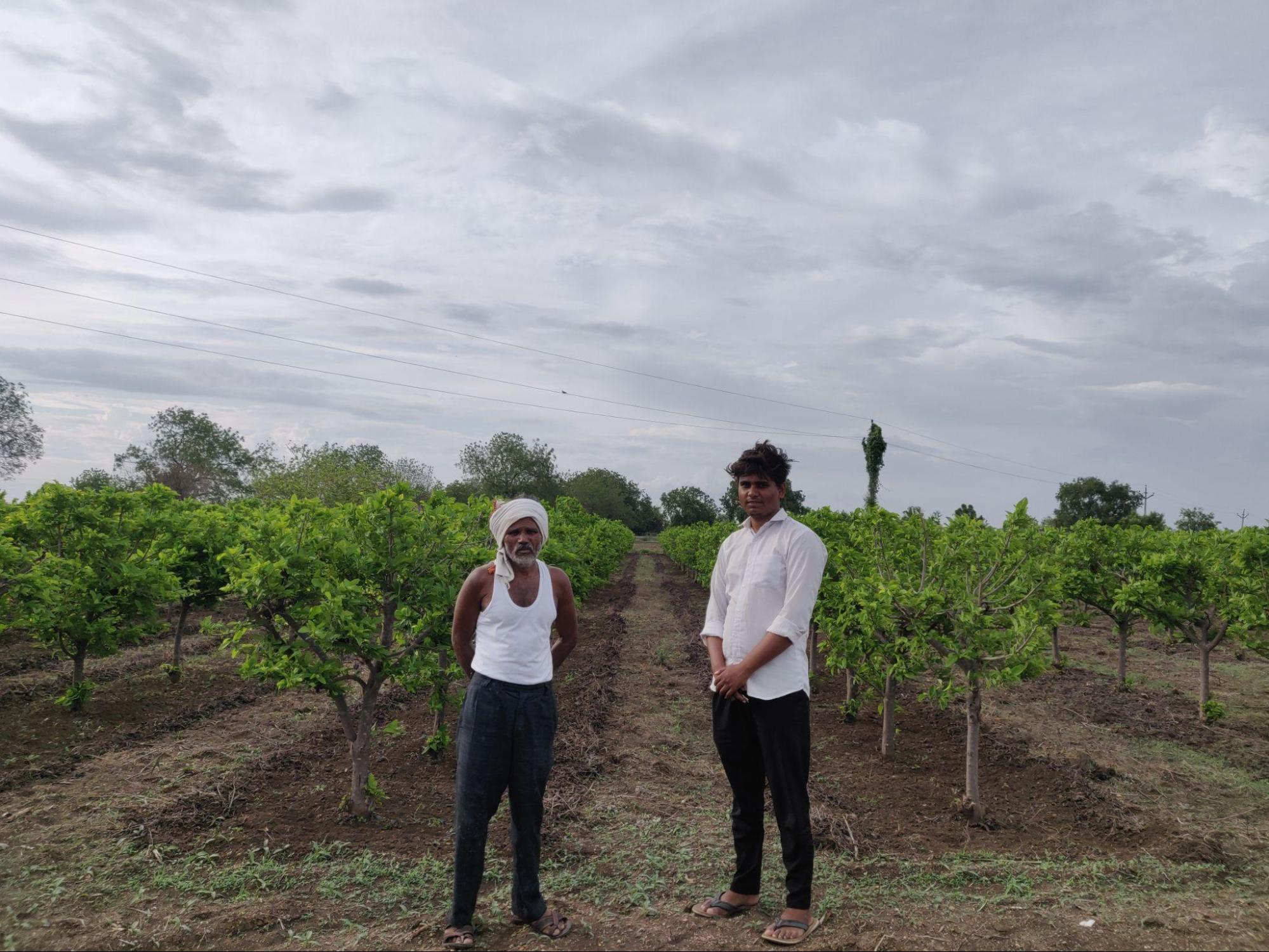
Namdev’s approach to farming highlights the importance of diversification. Alongside custard apples, he also grows soybeans and cotton on his remaining acres. This strategy not only stabilises his income but also mitigates the risks associated with fluctuating market prices. By rotating crops and managing various harvest cycles, Namdev ensures a consistent flow of income throughout the year, showcasing adaptability in a challenging agricultural landscape.
In the past two years, Namdev has started generating income from his custard apple harvests, selling them to traders directly at prices ranging from 25 to 35 rupees per kilogram. He sees potential for even higher earnings, up to 40 to 50 rupees per kilogram, if processing companies establish operations in his area. This prospect could create a win-win situation, benefiting both local farmers and the companies involved.
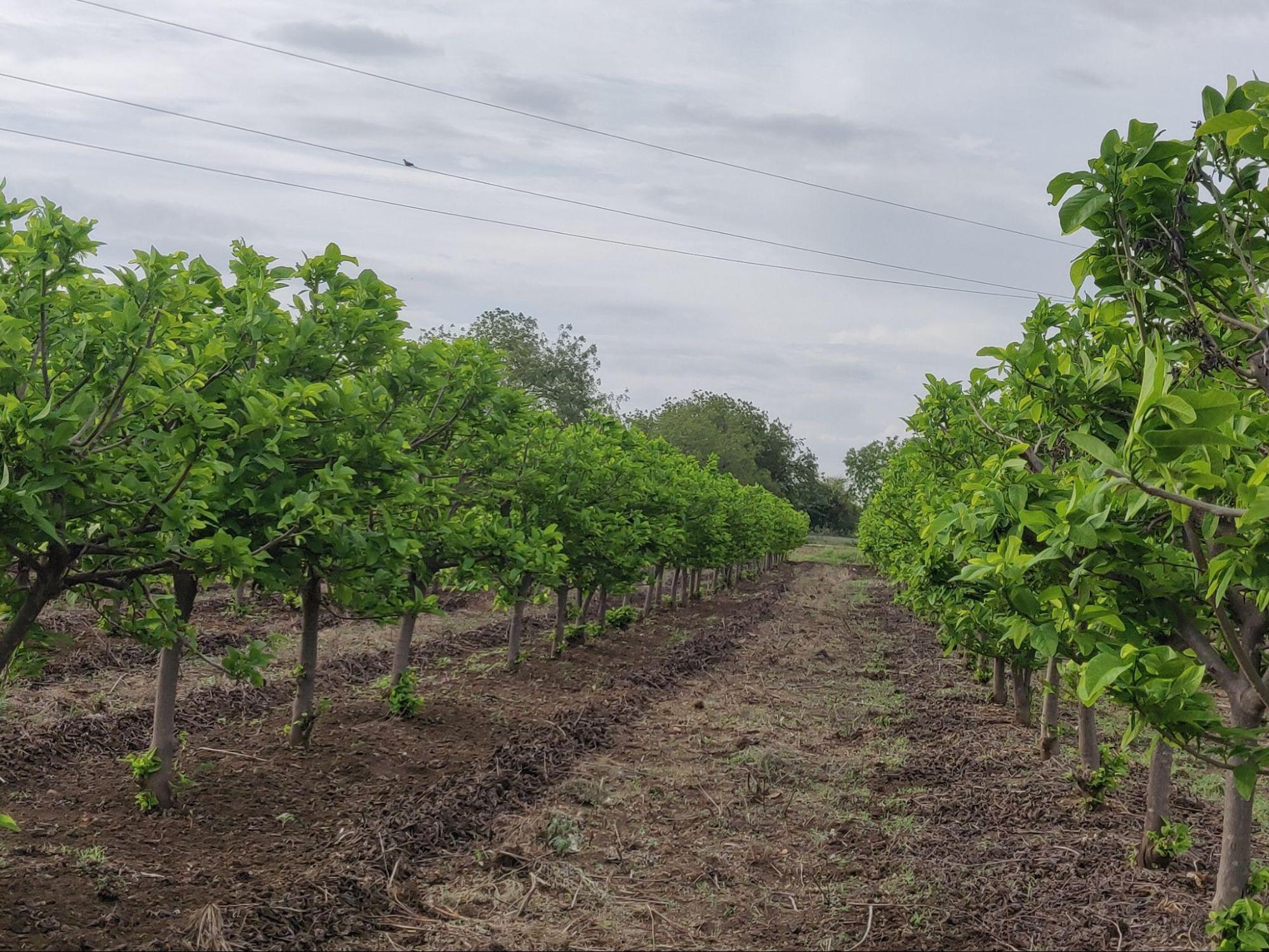
Namdev emphasises several advantages of custard apple farming, including low initial investment, minimal threats from animals, and no irrigation needs after the winter harvest. During the initial two years of planting, while the custard apple trees matured, he intercropped to generate additional income. When asked why custard apples aren't more widely cultivated, he explains that farmers with better water access typically prefer sugarcane or sweet lemons. For him, custard apples are the ideal choice given his circumstances.
As environmental challenges intensify, farmers across the region are increasingly adapting their practices by focusing on crops that require less water and offer stable income. The potential for increased earnings through local processing facilities further underscores the viability of custard apple farming as a sustainable agricultural practice in Jalna, paving the way for a more resilient farming future.
Soybean Farming
Soybean is a seasonal crop that is harvested within three months, mainly during the rainy season, and thrives in low-rainfall regions. In Jalna, its cultivation is widespread due to the area's drought-prone conditions. Many farmers grow soybeans during the rainy season and follow up with winter crops like wheat, bajra, jowar, sugarcane, or moong, enabling them to generate income twice a year.
Bhagwat Dhawale, a farmer from Asangaon village in Ghansawangi taluka, cultivates soybeans due to the limited water availability in his region. The cost of cultivation per acre ranges from 7,000 to 8,000 rupees, with expected yields between 9 to 12 quintals. With a Minimum Support Price (MSP) of around 4,600 rupees per quintal, a successful harvest can result in earnings of 40,000 to 50,000 rupees in just three to four months.
Despite these potential rewards, Bhagwat faces significant challenges. Rising prices for seeds and fertilisers, coupled with unpredictable rainfall patterns, complicate his farming efforts. Timely rain within a month after sowing is critical; without it, the risk of fungal infections increases, potentially leading to total crop failure.
In search of a more stable income, Bhagwat has started transitioning to silk farming, taking advantage of government schemes. He has planted mulberry trees to supply leaves to a local chowki centre that raises silkworms. However, he reports encountering corruption when attempting to access government funding. Although the government offers subsidies of around 4 lakh rupees per acre over three years, farmers often find themselves needing to pay bribes totalling about 1 lakh rupees. This systemic corruption poses a significant barrier to the agricultural development intended to support farmers in the Marathwada region.
Sericulture
Sericulture has emerged as a viable alternative for farmers seeking stable income in Jalna. Since the establishment of the resin industry in 1989, the cultivation of mulberry and the rearing of silkworms have been successfully implemented, particularly in the talukas of Bhokardan and Jafrabad. The Maharashtra Khadi and Village Industries Board (KVIB) supports this initiative by providing farmers with subsidised tuti seeds, free cocoons for the first two years, and training courses to enhance their skills.
This scheme has a three-year duration and is tailored to support individual farmers. Notably, mulberry plants require less water than many conventional cash crops, making them ideal for those facing irrigation difficulties. Once established, these trees can yield for 10 to 15 years, and the market price for silk cocoons can range from 30,000 to 50,000 rupees per quintal.
From the second year onward, farmers can expect to harvest between 4 to 5 quintals of cocoons, potentially earning between 120,000 to 200,000 rupees from a single acre of mulberry garden. Additionally, the MGNREGA scheme should provide farmers with a total of 895 man-days for tasks related to mulberry cultivation and silkworm rearing, along with necessary supplies.
In villages like Shripatdhamangaon, where traditional crops like cotton, bajra, and jowar are common, farmers are increasingly exploring sericulture to boost their incomes.
Use of Technology
In the Jalna district, farmers are leveraging a combination of modern technology and traditional practices to enhance their agricultural efficiency. Many utilise technologically advanced tractors alongside bulls, creating a complementary farming system. During the summer, when preparing the land for sowing, tractors are the primary choice due to their speed and efficiency. However, once the rainy season arrives and the crops are sown, farmers often revert to using bulls for cultivation tasks. This switch helps protect delicate crops from potential damage caused by larger tractors.
It's worth noting that not all farmers have the financial means to invest in smaller tractors, which can make the reliance on bulls a practical solution. This blend of modern machinery and traditional animal power allows farmers to adapt to their specific needs and resources, ensuring sustainable agricultural practices in the region.
Institutional Infrastructure
Sugar Cooperatives and Local Politics
The district is home to six sugar cooperatives, predominantly owned by local politicians, as per the national cooperative database. These cooperatives, along with various credit societies, facilitate low or no interest loans to farmers, providing much-needed financial support for agricultural activities.
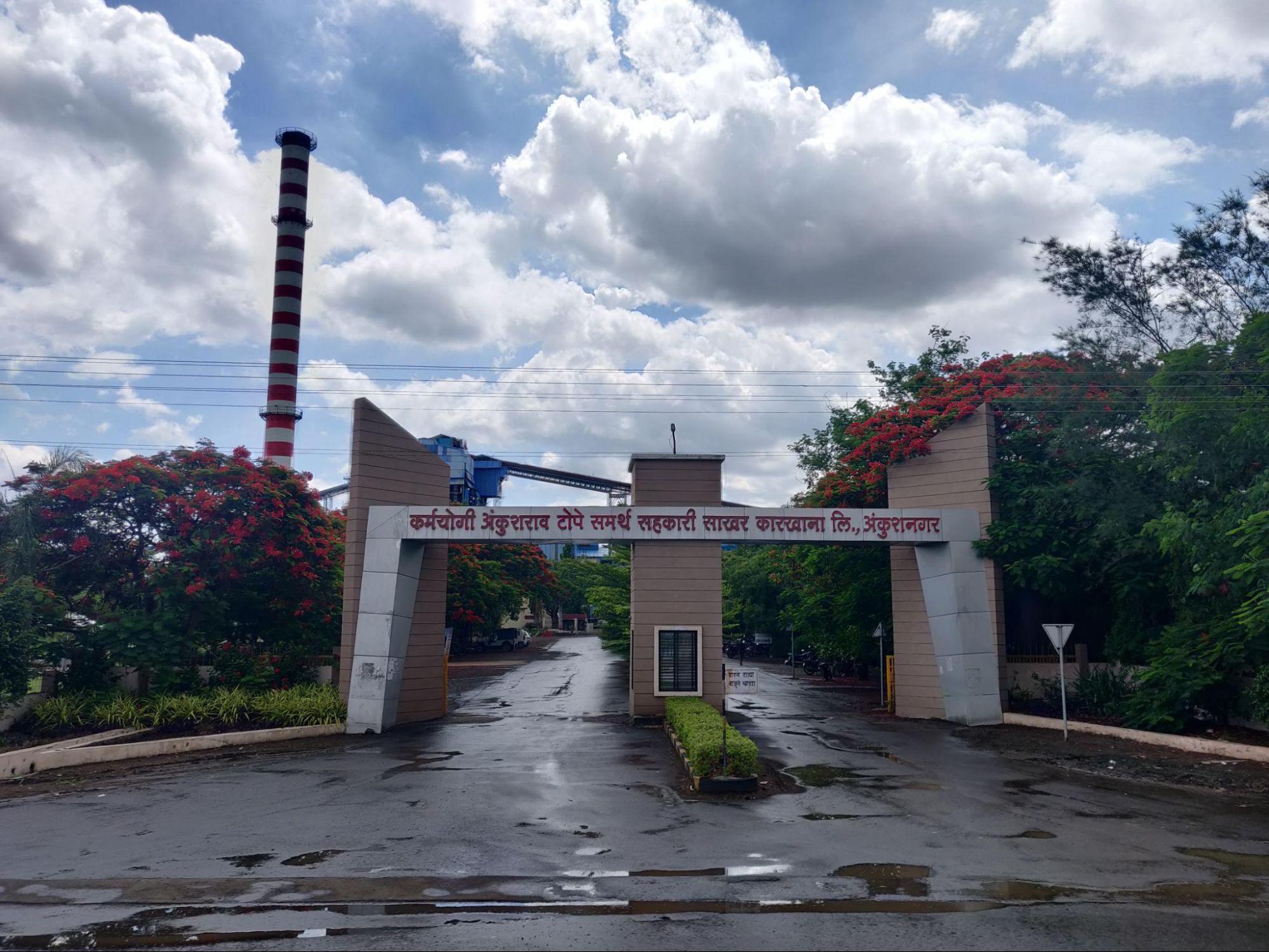
Farmer Producer Organizations (FPO)
The BPG Agricultural Producer Company, based in Jalna Taluka, has emerged as a significant player in supporting local farmers.
Seed Capital of India
Known as the seed capital of India, Jalna houses numerous seed companies that contract farmers for seed production. However, this practice is limited to specific areas, and contractual farming for other crops remains scarce.
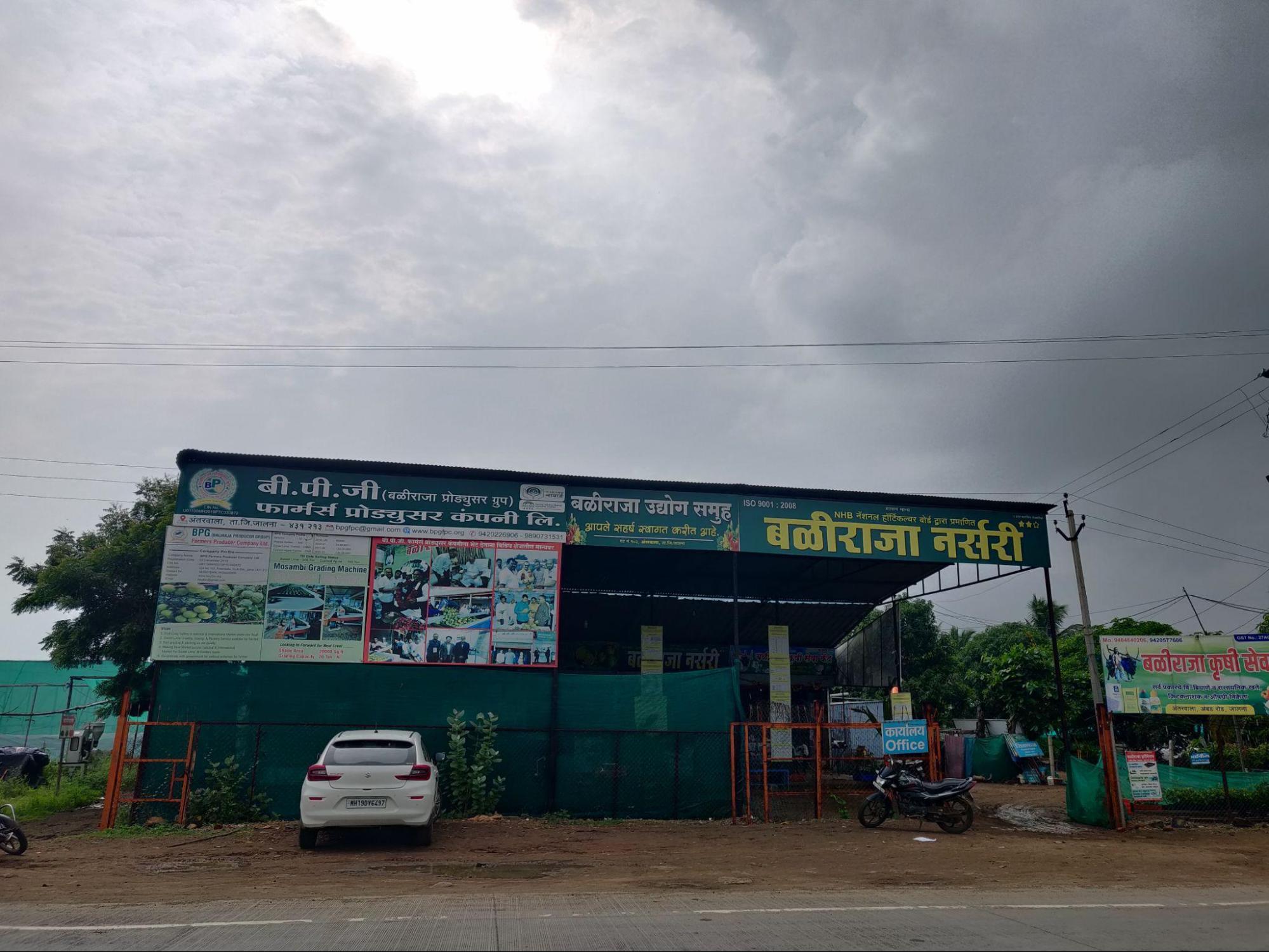
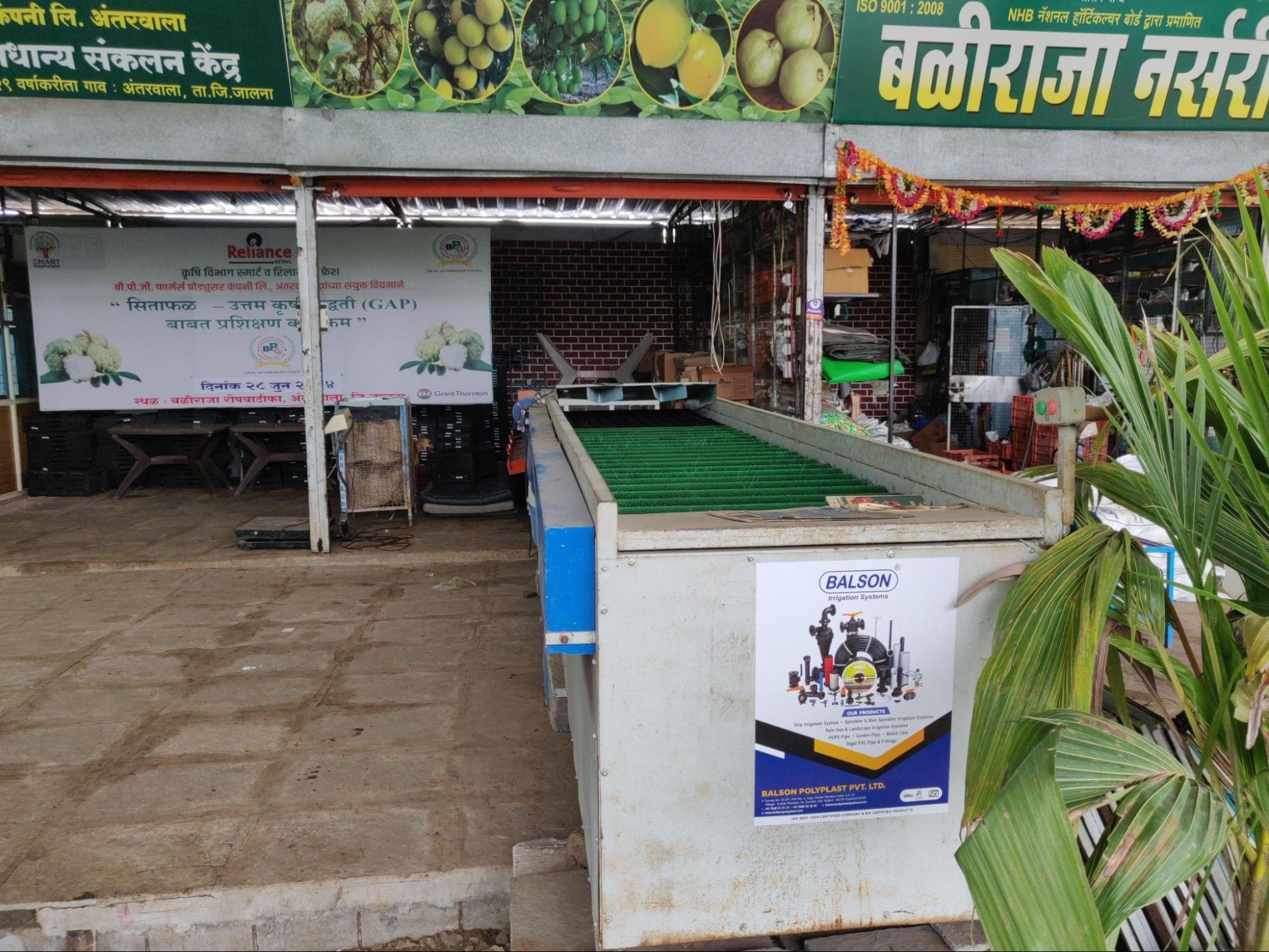
With around 500 shareholders, including 2,000 custard apple farmers and 10,000 sweet lime farmers, the organisation focuses on grading food products and organising training programs. Established in 2019, it collaborates with the government to access various schemes and has partnered with Reliance for better market reach.
Market Structure: APMCs
The APMC structure in Jalgaon is fairly well-developed, with nine key APMC markets across the district. Most APMCs are equipped with facilities like godowns, auction halls, and cattle sheds, and some even have cold storage units. A few major commodities that are old include Cotton, Green Gram, Wheat, Sorghum, Soybean, Pigeon Pea, Horse Gram, etc.
Farmers generally hold a positive view of the Agricultural Produce Market Committee (APMC), perceiving it as a fair marketplace where their produce can fetch appropriate prices through competitive bidding. They appreciate the security it provides, believing that it shields them from exploitation by traders. The government-set base prices offer them a reliable option, ensuring they can sell directly to the government if traders' prices fall below acceptable levels. This arrangement alleviates the burden of seeking individual buyers, which can be costly and time-consuming.
List of APMC markets(as of September 2024)
|
Sr. No |
Name |
Est. Year |
Chairman |
No. of Godowns |
|
1 |
Ambad |
1971 |
Satish Annasaheb Honde |
4 |
|
2 |
Ashti |
2002 |
Shtraghun Sadashiv Kanse |
1 |
|
3 |
Badnapur |
NA |
NA |
NA |
|
4 |
Bhokardan |
1972 |
Kautik Namdev Jagtap |
4 |
|
5 |
Ghansawangi |
2003 |
Tataysaheb Eknathrao Chimane |
6 |
|
6 |
Jafrabad |
2009 |
Govindrav Bajirav Pandit |
2 |
|
7 |
Jalna |
NA |
NA |
NA |
|
8 |
Mantha |
1965 |
Asaram Jijabhau Borade |
3 |
|
9 |
Partur |
1936 |
Rahul Babanrao Lonikar |
NA |
Farmers Issues
Impact of Changing Climate Conditions
According to local farmers, over time, climate change has significantly altered cropping patterns in Jalna, shifting from all-year crops to seasonal varieties due to low income, labour shortages, and erratic rainfall. Many farmers are transitioning from cotton to more resilient seasonal crops like soybean, which thrives in the rainy season, and chana, suitable for low-water areas. Farmers recall that in their youth, crops like moong and tur were common; however, the emphasis has now shifted to varieties that can better withstand the region's changing climate.
The irrigation infrastructure, particularly the canals built around 1972 during a severe drought, has influenced these shifts. Farmers along the Godavari River, especially in the left and right canal areas, predominantly cultivate sugarcane, benefiting from year-round water availability. This irrigation system plays a crucial role in the agricultural landscape, allowing certain crops to flourish.
In Jalna, the cropping pattern is dynamic and varies significantly across different talukas, responding to seasonal rainfall and water accessibility. While cotton and soybeans remain popular throughout the district, regions with fertile plains, like Ambad and Ghansawangi, primarily focus on sugarcane cultivation. The Lower Dudhana Dam area also contributes to this production, underscoring the importance of irrigation in the region.
Jalna is renowned for its sweet lemons, a product recognised under the "One District, One Product" initiative by the Maharashtra government. The main cultivation areas for sweet lemons are in Ambad, Badnapur, and Ghansawangi, where consistent water availability supports production. However, this resource is often insufficient for growing sugarcane in these areas.
In the remaining talukas, Mantha, Partur, Badnapur, Ambad, Jalna, and Ghanasavangi, cotton, soybean, moong, and tur dominate the landscape. The preference for these crops is largely due to the limited water resources during the summer months, making them more viable for seasonal harvesting until mid-winter.
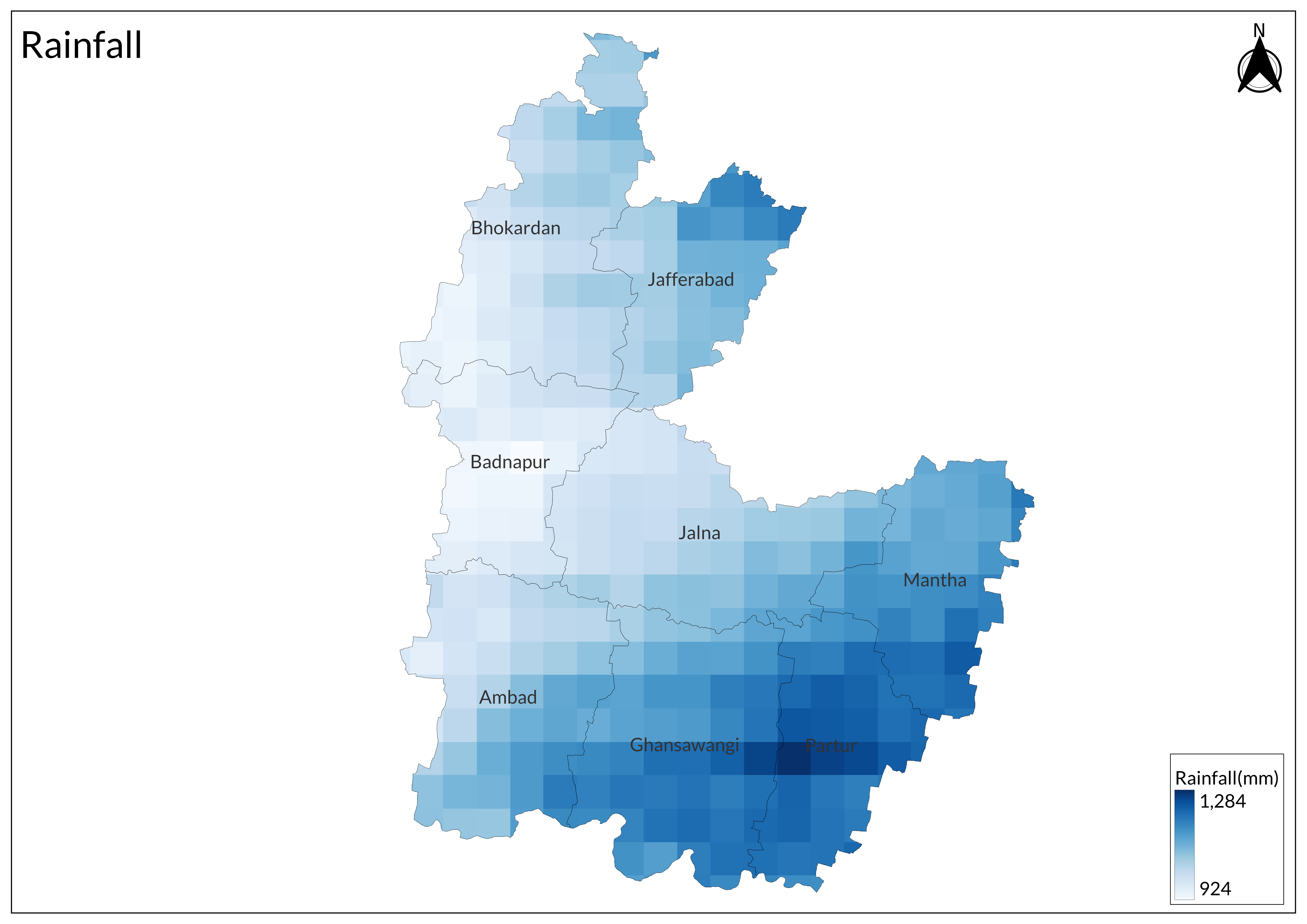
Awareness of Government Schemes
Farmers in Jalna are generally well-informed about government schemes, thanks in part to initiatives from block-level officers who use tools like WhatsApp groups in local languages to enhance communication. For example, the district silk office actively runs campaigns to register farmers for silk farming and inform them about available subsidies. This proactive approach helps ensure that farmers are aware of the resources and support available to them.

Graphs
Irrigation
Cropping Metrics
Land Use and Credit
Sources
DCMSME. Industrial potential Survey of Jalna Districthttps://dcmsme.gov.in/publications/traderep/…
Government of Maharashtra. 2022. Success Story of Sericulture under MGNREGA: Jalna District of Maharashtra. Government of Maharashtra.https://mahaegs.maharashtra.gov.in/wp-conten…
NABARD. 2016-17. Potential Linked Credit Plan: Jalna. Maharashtra Regional Office, Pune.https://www.nabard.org/auth/writereaddata/te…
Patole, Shahu. 2024. Dalit Kitchens of Marathwada. Translated by Bhushan Kargaonkar. Harper Collins: New Delhi.
The Indian Express. 2017. B.R. Barwale (1931-2017): The Engine Oil Dealer Who Fathered India's Seed Industry. The Indian Express.https://indianexpress.com/article/india/b-r-…
The Print. 2022. Maha Authorities Plan to Transform Jalna District into Silk Capital. The Print.https://theprint.in/india/maha-authorities-p…
The World Food Prize Foundation. 1998. B.R. Barwale – 1998 Laureate. The World Food Prize Foundation.https://www.worldfoodprize.org/en/laureates/…
Trond Vedeld, Guro Aandahl, Line Barkved, Ulka Kelkar, Karianne de Bruin, Prutha Lanjekar. 2014. Drought in Jalna Community-based Adaptation to Extreme Climate Events in Maharashtra. The Energy and Resources Institute (TERI) and the Norwegian Institute for Urban and Regional Research (NIBR).https://www.teriin.org/projects/eva/files/Dr…
आपली शेती आपली प्रयोगशाळा. YouTubehttp://www.youtube.com/@ApliShetiApliPrayogs…
Last updated on 6 November 2025. Help us improve the information on this page by clicking on suggest edits or writing to us.